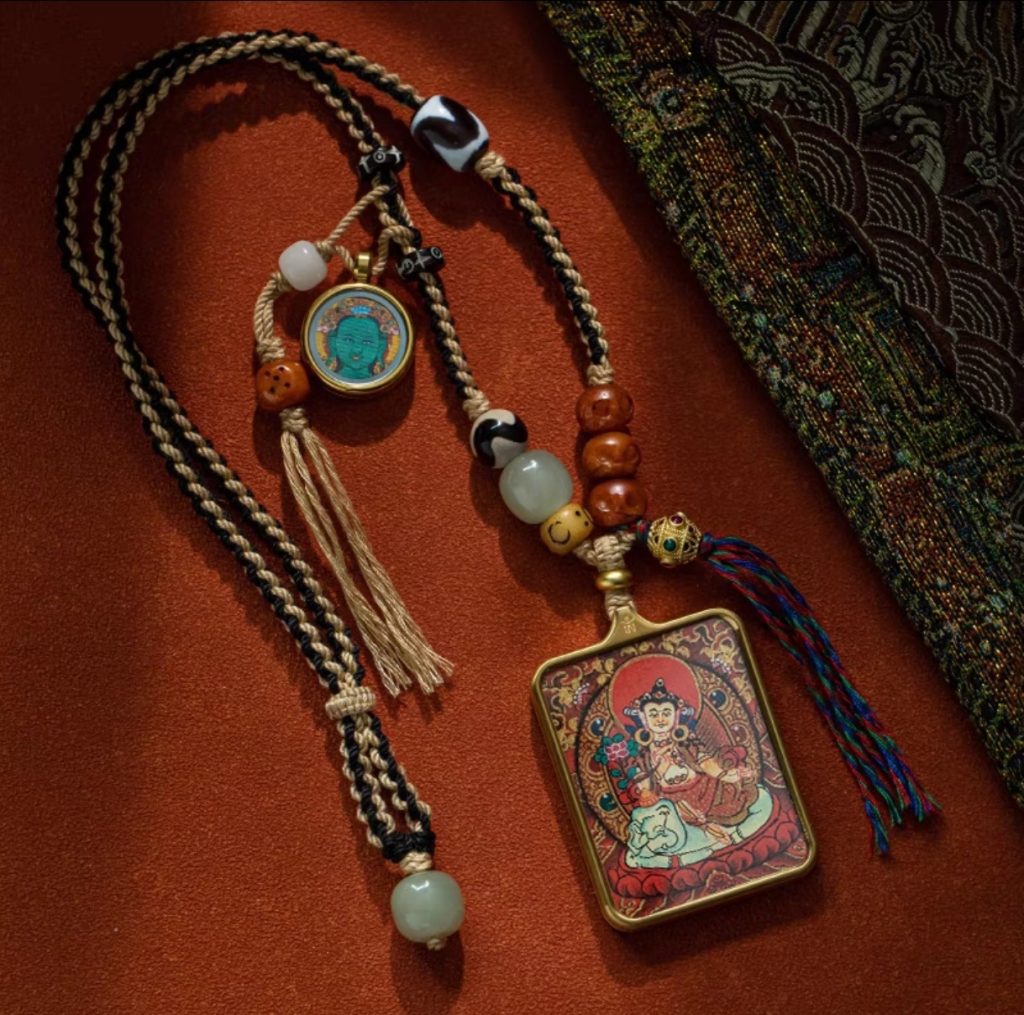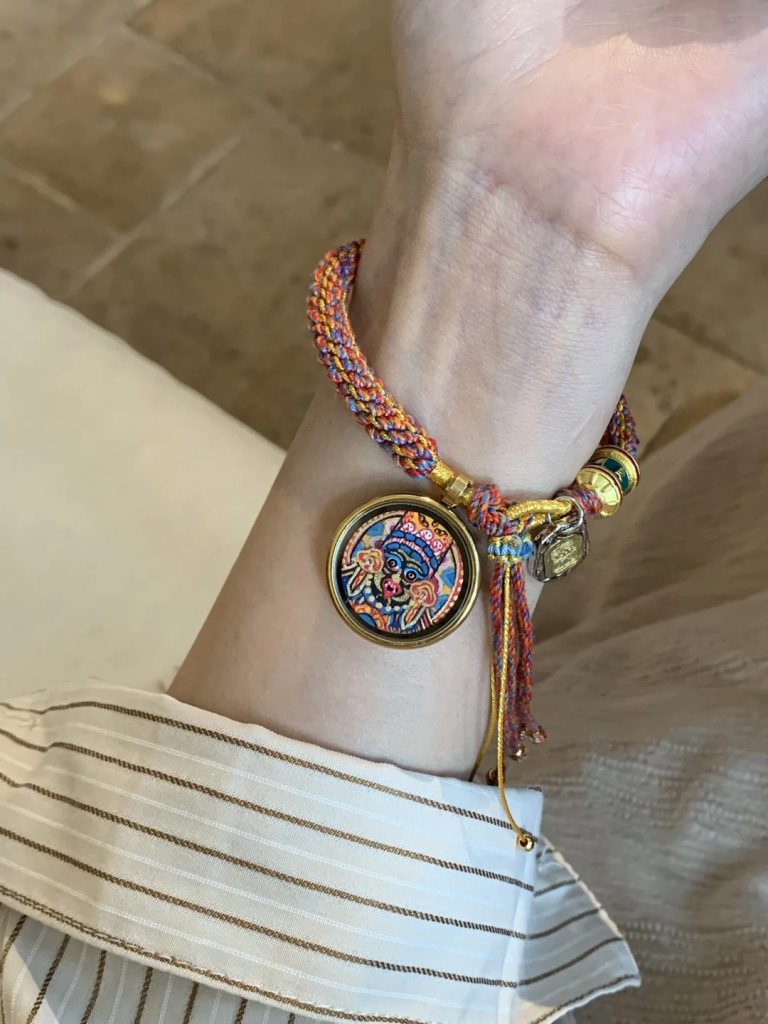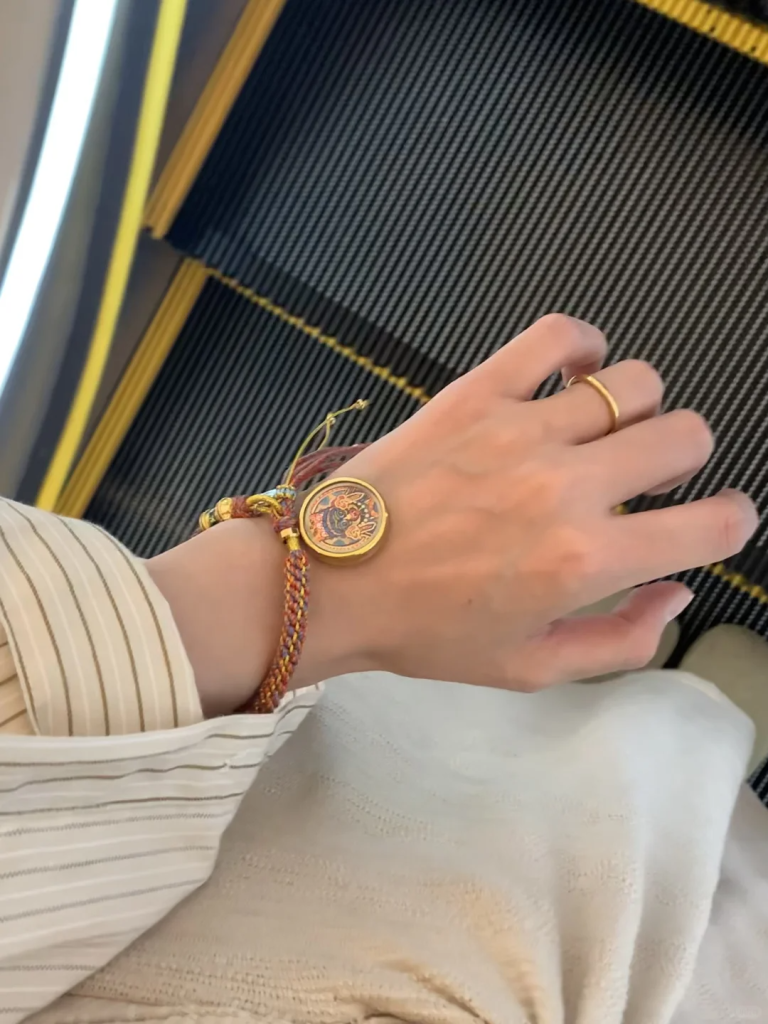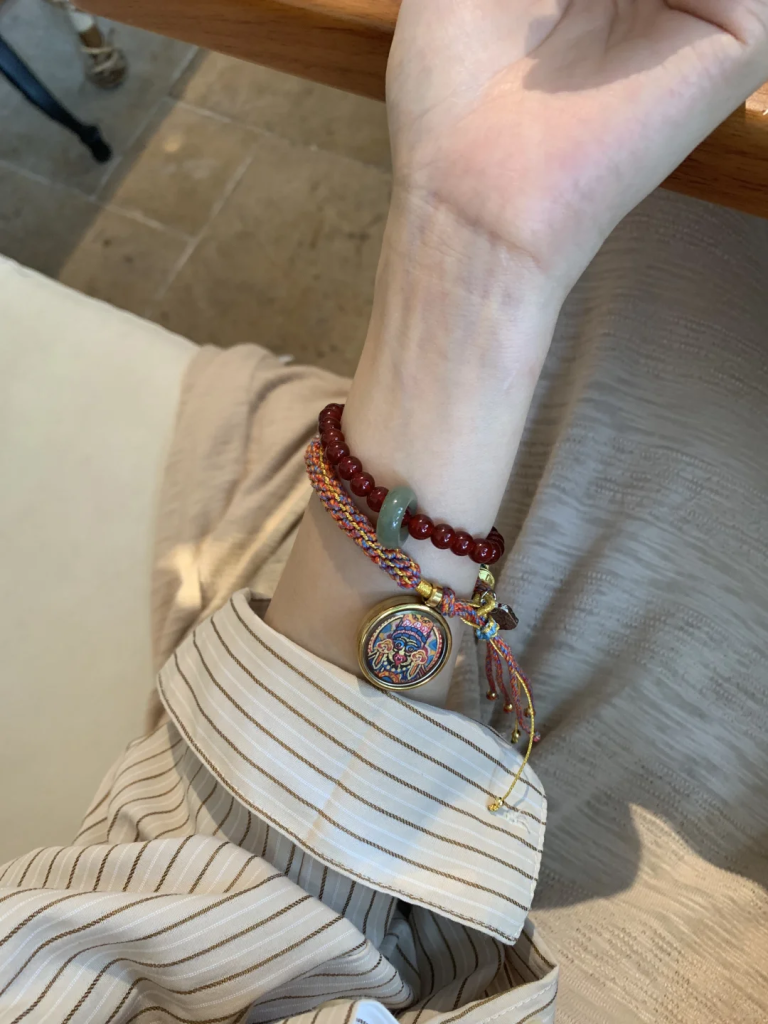Thangka—the intricate and sacred Tibetan Buddhist scroll painting—has captured the awe of art lovers, spiritual seekers, and cultural collectors worldwide. But few know that these works of devotion and detail are often referred to as “the most poisonous paintings in the world.”
Yes, you read that right. The art form revered for its sacred precision and spiritual essence carries a history of immense personal sacrifice, physical toll, and even toxic exposure. In this post, we dive deep into what makes Thangka so special, so dangerous, and why the power it represents is now worn as Thangka amulets—beautiful, powerful talismans carrying divine protection.
What is a Thangka?
Originating from Tibet, Thangkas are sacred paintings on cotton or silk appliqué, depicting Buddhist deities, mandalas, or religious scenes. These artworks are not merely decorative—they are used as tools for meditation and teaching, often kept in monasteries or personal altars.
The spiritual precision of Thangka painting demands deep devotion, discipline, and adherence to Buddhist iconographic guidelines. Each line and color must be placed with intention and purity.
Learn more from the Rubin Museum of Art’s Thangka collection.
Why Is Thangka Called “The Most Poisonous Painting”?
1. The Use of Toxic Natural Pigments
Unlike modern artists who use safe acrylics or oils, Thangka artists traditionally use natural mineral-based pigments derived from sources like:
- Malachite – a source of vivid green, but toxic when inhaled or ingested
- Cinnabar (Mercury Sulfide) – used for red tones, yet highly toxic
- Azurite – deep blues, derived from copper compounds, dangerous with prolonged exposure
- Gold dust – applied meticulously by hand, causing prolonged eye strain
Each pigment is carefully ground and mixed by hand, a task that alone can take days. Artists inhale fine dust particles, and over time, accumulate toxic exposure.
2. Painters Literally Eat the Paint
This might sound shocking: to achieve smooth gradients and perfect blending, painters dip their brush tips in their mouths after mixing pigments with water or saliva. This practice, repeated hundreds of times daily, leads to chronic ingestion of toxic substances.
Why? Because natural pigments dry quickly, and using water alone isn’t enough for soft transitions. The human mouth becomes a tool in the blending process—making Thangka an art that is not just drawn, but embodied.
3. Physical Deformation and Long-Term Health Damage
Thangka creation takes hours of immobile focus. Painters sit hunched, leaning over scrolls for years. Most artists develop:
- Spinal deformities from prolonged bending
- Hand tremors in their 40s or 50s
- Vision problems from microscopic detail work
The sacrifice is immense, and yet, many continue for decades. Because Thangka is not just art—it is a spiritual offering.
Spiritual Significance of Thangka
Thangka paintings are considered sacred representations of divine presence. Each detail, from color choice to deity alignment, carries spiritual meaning. In Tibetan Buddhism, Thangka paintings are believed to offer:
- Protection from evil
- Guidance in meditation
- Purification of karma
- Healing and peace
By meditating on a Thangka or even carrying an image of one, devotees connect to the wisdom and compassion of the Buddha or bodhisattva depicted within it.
See more sacred functions in this academic study from JSTOR.
Thangka Amulets: Wearable Protection & Art
Today, artisans and spiritual designers have transformed these powerful images into Thangka amulets—miniature wearable versions crafted into pendants, bracelets, and wall charms. Each amulet carries:
- The protective essence of Buddhist deities
- Hand-painted or laser-etched details inspired by real Thangkas
- Symbolic protection, luck, and mindfulness in daily life
Thangka amulets are especially popular among spiritual travelers, yoga practitioners, energy workers, and lovers of Asian mysticism.
Why You Should Wear One
- They connect you to centuries-old Tibetan spiritual energy
- They serve as a daily reminder of compassion and inner calm
- They can be gifted as symbols of love, strength, or protection
Explore wearable sacred art options on our Thangka Amulets Collection.
Thangka in the Modern World
Despite the toxic risks and physical toll, Thangka painting has not faded. It’s being preserved through generations in Nepal, Tibet, Bhutan, and Northern India. Meanwhile, Thangka-inspired fashion, jewelry, and spiritual items are entering global awareness.
With greater cultural exchange and global appreciation of spiritual artifacts, owning or wearing a Thangka piece is not only a fashion or décor choice—it’s a spiritual commitment.
For further reading on Tibetan cultural preservation, visit International Campaign for Tibet.
Final Thoughts
Thangka is not just art—it is discipline, sacrifice, and spiritual transcendence. The pain behind every brushstroke makes it perhaps the most human art of all. To wear a Thangka amulet is to honor not only its divine essence but also the lifetime of devotion each painting demands.
Protect yourself, inspire your spirit, and carry centuries of sacred energy with a Thangka amulet.






Leave a Reply